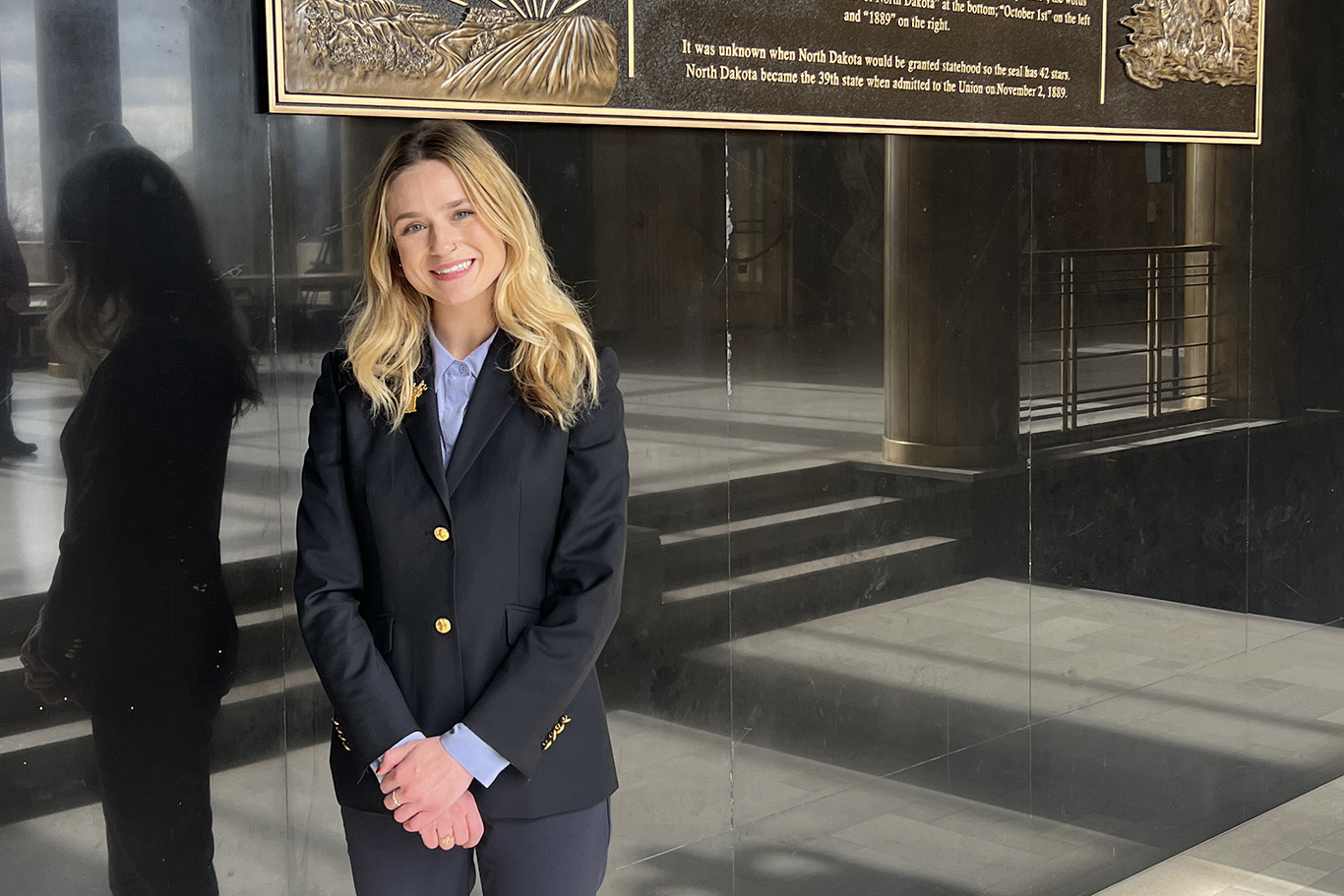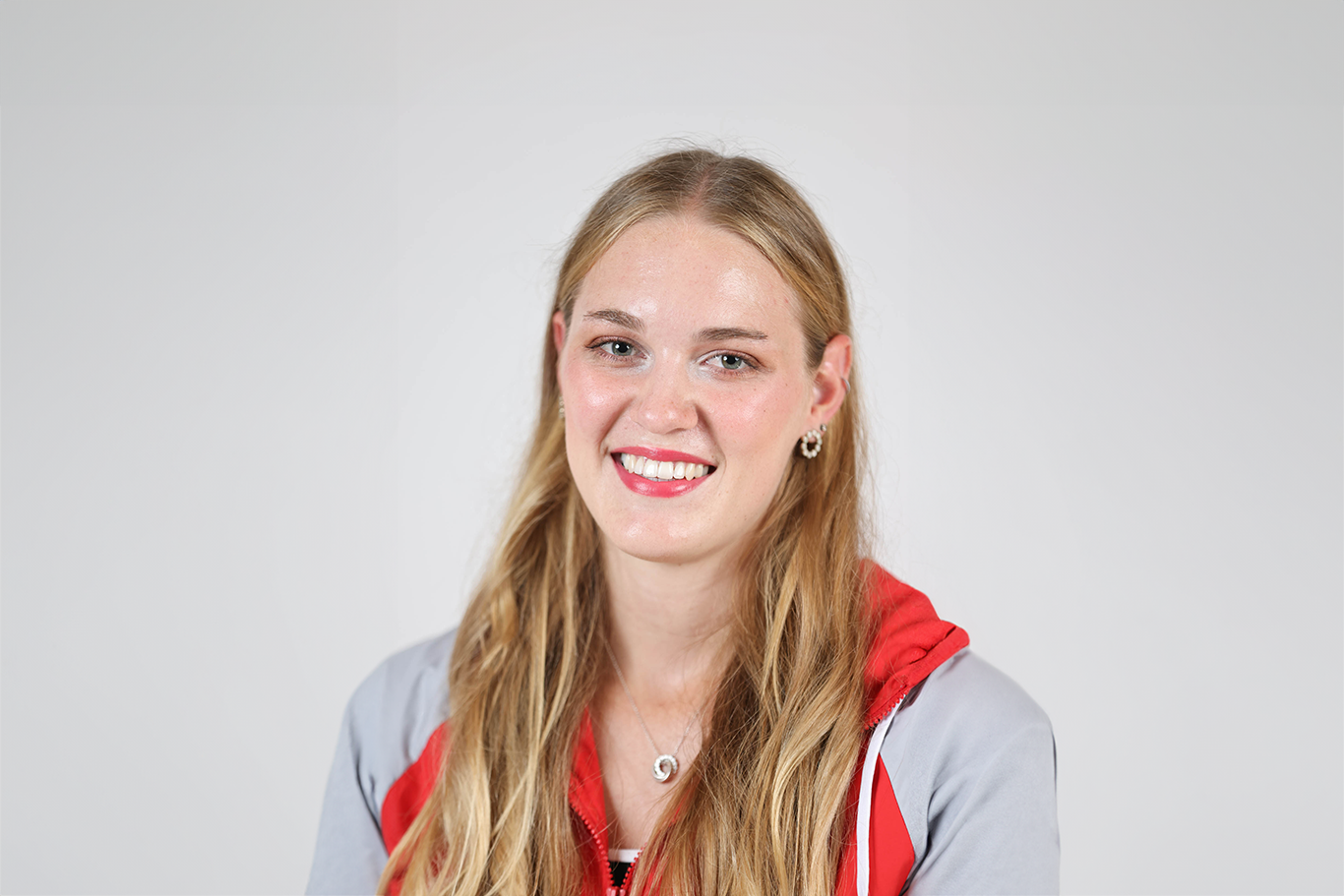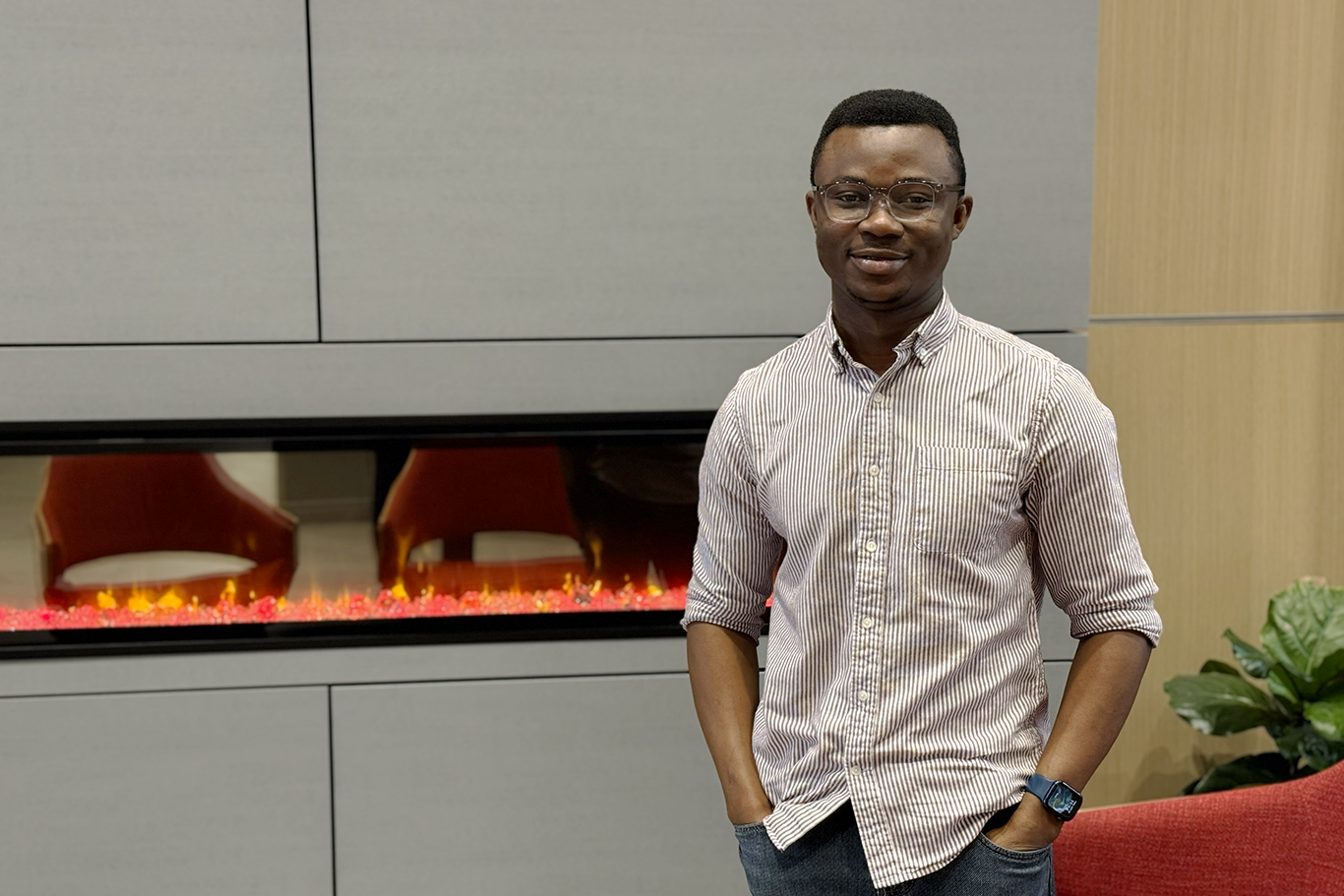Addressing the Equity Gap: Survey sheds light on Native American student experiences
Dr. Caitlin Johnson, an Assistant Professor of Educational Leadership at Minnesota State University Moorhead, recently reflected on how she is viewed:
“As a Native American woman with a Ph.D., I’ve been called a unicorn. I don’t think people look deeper into the reasons why we are so rare,” she said.
In 2020 at MSU Moorhead, 57% of Native American first-year students completed their first year and enrolled for a second year. This statistic is 25% lower than the average for other attending students.
MSUM’s equity gap led Dr. Johnson to request and receive funding to conduct a needs survey of Native American students on campus. Thanks to a team of Native American student researchers organized by Dr. Johnson, the survey was conducted in the fall semester of 2023.
One of those student researchers is Brian Johnson, who is pursuing a Bachelor of Science in Project Management. Brian works as an Indian Education Liaison for Moorhead High School and the Moorhead Alternative Learning Center. He works closely with Native American students to help close the equity gaps in secondary school, and he recognizes that Native American students struggle to see higher education as something attainable.
“College is not reachable for many Native American potential students. Addressing these issues will increase enrollment down the road, which will be a good thing for the Native community,” Brian said.
Madi LaVallie, a third-year pursuing a Bachelor of Social Work, and Darla Warren, a graduate student pursuing a Doctorate in Educational Leadership, were also a part of Dr. Johnson’s 100% Native American student research team.
The Native American Student Needs Survey polled students on schoolwork, living situations, connection to culture, mental health, and their overall experience at MSUM. This survey supplements the Campus Climate Survey done in the spring semester of 2023, where in the preliminary data for the survey, Native American was included in the ‘other races/ethnicities’ category.
“This survey came out of a place of wanting to help this community in a way that is inclusive to everyone, including helping Native American students feel a sense of belonging,” Brian said.
MSUM is committed to creating a campus culture that values and celebrates diversity of ideas, perspectives, and people, and in doing so, strives to be diverse, inclusive, and globally aware.
Some of the key takeaways:
There is a desire for more Native American cultural programming. When asked about learning traditional dancing or creating traditional regalia, the majority of those surveyed said that they would benefit from those types of opportunities. Over half of the students surveyed already participate in cultural practices, but the practices are off campus, therefore, not accessible to all students.
“Many students said they would like the opportunity to be involved in more cultural practices. This is an excellent opportunity to gain headway,” Darla said.
Students overwhelmingly struggle with the financial aspect of college. The majority of those surveyed attend college full-time, and over one-third of those students also work full-time to meet their basic needs. For some students, basic needs are not being met, with a small percentage identifying themselves as homeless, as well as close to one-third of students stating that they get enough food to eat ‘some of the time’ or less.
Work prohibits many students from being involved on campus. Nearly half of the students surveyed reported wanting to be involved in clubs, activities during Native American Heritage Month, and other cultural events, but their work schedules conflict with them attending. Of the Native American students who responded to the survey, supplying themselves with basic needs often comes at the cost of being involved in their cultural heritage. Not feeling connected to one’s culture and community can have adverse effects on one’s mental health, which is what was seen in the survey as well.
Students feel anxious and nervous. Over half of the students surveyed answered that they felt anxious or nervous ‘most of the time’ or ‘a good bit of the time’, and close to half answered that school has a good amount of influence on their overall demeanor and feelings about themselves. Also, 55% of indigenous students at MSUM are first-generation college students, and 60% are non-traditional, meaning they either have dependents, are single parents, are over 24 years old, work full-time, attend part-time, or any combination of these factors.
While this lack of connection to culture can feed into mental health issues, the adverse happens as well. Madi mentioned how taking part in cultural practices at MSUM has helped her thrive in college.
“The George Soule American Indian Student Center in the CMU has lots of supplies available for traditional arts and crafts, I used these resources to teach my self how to do beadwork, as well as practicing traditional medicine, mainly smudging with sage and cedar. It makes me feel more connected to my ancestors and my culture, and has helped improve my mental health which has improved my experience in higher education,” Madi said.
Dr. Johnson said that while Native American students are struggling in higher education – a fact validated by this survey – support, mentorship and connection can help students thrive and make it through to graduation.
“We may have additional barriers, but we’re resilient, and we can get through them with support,” Dr. Johnson said.
While only 40% of Native American students on campus interacted with the survey, Brian sees this as something that starts to build trust with MSUM’s Native American students.
“There are a lot of Native students who didn’t have their voices heard, but we want to hear from everyone. I hope this is a good step toward gaining their trust so we can get more engagement from our Native American students in the future,” Brian said.
Dr. Johnson hopes to see more Native American programming on campus in the future and to identify and communicate resources more effectively, since a significant number of the students polled stated they didn’t know how to apply for a diversity scholarship.
Minnesota also has new legislation that allows indoor smudging, a cultural ceremony practiced by various Native American tribes. Dr. Johnson hopes this survey helps support this practice on MSUM’s campus.
Giving Native American students the opportunity to engage and be active in their culture is crucial to MSUM’s goal of becoming an inclusive campus to all. This survey reflects the needs of Native American students on campus, as many are struggling with finances, their mental health, a sense of belonging, and ties to their culture.
“The ultimate goal is to be proactive… while the number of Native American students isn’t large, the lack of numbers tells us something,” Dr. Johnson said.
Dr. Johnson’s student research team will be presenting this survey at MSUM’s Student Academic Conference on April 24, and in June at the Native American Student Advocacy Institute conference in Minneapolis.
Make Sure Your Story Is Heard
Let us know how your life has been changed by being a Dragon: tell us your MSU Moorhead story today!
Send Us Your Story


